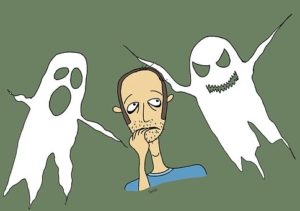Secondary Gain
Category : Uncategorized
Secondary Gain
Secondary gains are the “benefits” people get from NOT overcoming a problem. For many people who are stuck, secondary gains are an important mechanism in why they stay stuck. Secondary gain is usually not something people are consciously aware of e.g. generally the person is not being consciously manipulative or faking (the distress/impairment is still real).
When a client is asked what secondary gain they have by hanging on to their illness or negative behavior they are often oblivious to how their terrible struggle with the illness or behavior could benefit them in any way. In other words, they are not consciously refusing to change. Once a secondary gain is identified and brought to the conscious level it can be very insightful and life changing.
Take a moment and consider a change in your life you have repeatedly addressed with minimal progress. Challenge yourself to acknowledge how the unhealthy behavior or habit benefits you. What would you potentially lose by creating change in your life?
Sometimes the client will have no idea as to why the habit continues. It has gone unconscious become a habit an autopilot response and gone in to that part of our old brain that is concerned with survival.
Our subconscious mind or at least at part of it does seem to have a limited intelligence. This part is often called our inner child, by some. At this level of mind decisions are made that effect our lives, sometimes in huge ways.
How do we figure out whether we have secondary gain issues?
Be honest, very honest with yourself when answering this question – Am I standing in my own way? If you are getting an emotional reaction while reading this (anger, frustration, sadness, sorrow, or a sense of loss), it is very likely that your secondary gain issue is coming up.
Address it now. Remove it from your nonconscious mind remembering that your hidden mind does not want to give it up without a fight. Bring your secondary gain into your conscious mind by writing it down, journaling about it, making an audio or video recording of it, or talking to a therapist or a life coach about so that you are free to move on.
Contact me for a free consultation 024 75098634 or click HERE
Regards
Adam
www.blhypnotherapy.co.uk









